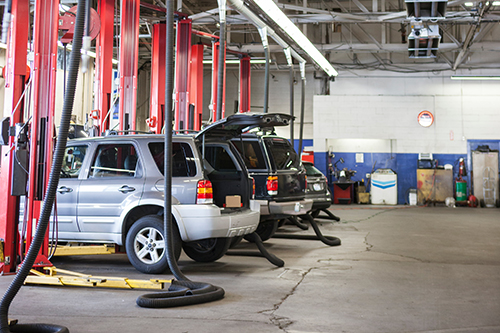A - Always Check Your Fluids
Fluids are the lifeblood of your vehicle, and keeping them at the right levels is crucial for its health.
- Engine Oil: Check your oil levels at least once a month and have it changed regularly every 3,000 to 5,000 miles or as recommended. Fresh oil keeps the engine lubricated and prevents wear. Be sure to understand the weight of your oil (after performing maintenance yourself, i.e., 5W-30).
- Coolant: The coolant prevents your engine from overheating. Make sure the coolant reservoir is filled to the proper level and look out for leaks, especially in warmer weather.
- Transmission Fluid: Transmission fluid keeps your car’s gears shifting smoothly. Have it checked periodically, especially if you notice slipping or rough gear changes.
- Brake Fluid: This fluid ensures your brakes function properly. Low levels can lead to brake failure, so inspect it regularly and top it off as needed.
- Be sure to make mental notes when moving the vehicle for fluid on the ground.
B - Brake Maintenance
Your brakes are one of the most important safety features on your car.
- Listen for noises: Squeaking or grinding noises when braking often indicate worn brake pads, which should be replaced immediately.
- Check the brake fluid and pads: Maintaining proper brake fluid levels is essential for braking performance.
- Inspect brake pads and rotors: Worn pads or warped rotors can lead to decreased stopping power and should be replaced regularly to ensure your car can stop safely.
- If the car is vibrating during the vehicle’s normal operation, check your rotors for warping as that’s a common symptom.
C - Cleanliness
A clean car not only looks great but also helps preserve its value and function.
- Interior: Regularly vacuum the interior, wipe down surfaces, and clean your upholstery to prevent wear and tear. Cleaning the air vents and replacing cabin filters can improve air quality inside the vehicle.
- Exterior: Wash your car frequently to remove dirt, debris, and salt, which can cause corrosion over time. Applying a coat of wax will protect the paint and keep it looking fresh longer.
- Under the hood: Keep your engine bay clean to prevent dirt and grime from causing damage to sensitive components. This also helps you spot potential issues more easily.
D - Don’t Ignore Warning Lights
Modern cars are equipped with dashboards that provide important information about your car’s health.
- Check Engine Light: If this light comes on, it can indicate anything from a loose gas cap to a serious engine issue. Don’t ignore it—get it checked out by a professional.
- Tire Pressure Light: If this light illuminates, it’s likely due to low air pressure, which can damage your engine. Stop driving and check the oil immediately.
- Brake Light: This may signal low brake fluid or an issue with the brake system. Address it immediately to ensure your car remains safe to drive.
E - Electrical System Upkeep
Your car’s electrical system powers everything from the headlights to the battery.
- Battery health: If your battery’s charge and clean any corrosion around the terminals. If the battery is more than three years old or struggles to start the car consistently, it’s a good idea to replace it.
- Fuses and Lights: Test all your lights and fuses. Replace any blown bulbs or worn fuses promptly for safety. Any new bulbs but can also get you a ticket.
- Check the electrical systems: If your AC or heating stops applying, blink only working lights or if interior, consider ensuring that no systems are under fault.
F - Follow a Maintenance Schedule
Sticking to a maintenance schedule will ensure your car doesn’t miss essential upkeep tasks.
- Check your owner’s manual: Your vehicle’s manual will have the manufacturer’s guidelines. Keeping a log of your car’s service history can help you stay on top of what needs to be done.
- Tips for staying organized: Keep all the receipts and put them all in the same place, that way you can see the vehicle’s maintenance history and plan future repairs.
Conclusion
Maintaining your used car doesn’t have to be difficult. By following this simple ABC guide—checking your fluids, maintaining the brakes, and keeping your car clean—you can keep your vehicle in great shape for years to come. Don’t ignore any warning lights; keep an eye on the electrical system and fuses, and stick to a regular maintenance schedule to ensure a smooth, safe ride every time.
Remember: the better you care for your car, the longer it will last and the more reliable it will be. Happy driving!
